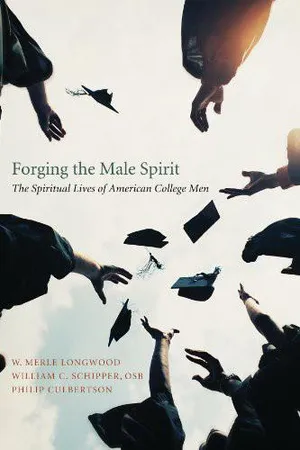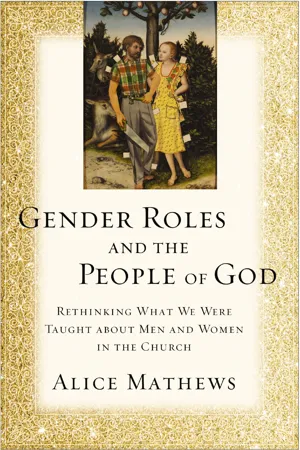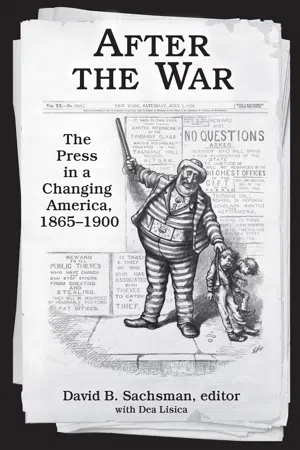History
Cult of True Womanhood
The "Cult of True Womanhood" refers to a 19th-century ideal of womanhood that emphasized piety, purity, submissiveness, and domesticity. This concept, also known as the "cult of domesticity," prescribed strict gender roles for women, defining their worth in terms of their roles as wives and mothers. It was influential in shaping societal expectations and norms for women during this period.
Written by Perlego with AI-assistance
Related key terms
3 Key excerpts on "Cult of True Womanhood"
- eBook - ePub
Forging the Male Spirit
The Spiritual Lives of American College Men
- Longwood, Schipper(Authors)
- 2011(Publication Date)
- Wipf and Stock(Publisher)
Whereas women in classical Christianity had been regarded as “carnal” in contrast to men who represented spirituality and rationality, now women—especially white, economically privileged women—came to be identified as more religious, more spiritual, more moral than men, though they continued to be viewed as irrational and emotional. The nineteenth-century Victorians privatized the spiritual realm as they placed women on a spiritual pedestal, shifting an earlier understanding of patriarchal dualism that had assumed men to be superior in spirit and reason while women were identified with the inferior aspects of body and emotion. 2 In the Victorian ideal, which found expression as “The Cult of True Womanhood” or “the cult of domesticity,” “True Womanhood” incorporated four cardinal virtues—piety, purity, submissiveness, and domesticity—and religion or piety was the core of a woman’s virtue and the source of her strength. 3 As a result, the church—particularly the Protestant church—in the nineteenth century became a feminine preserve, and clergymen of that era increasingly bemoaned that their congregations were composed of a great disproportion of females. Howard Allen Bridgeman, a liberal Congregationalist, for example, writing in the Andover Review in 1890, posed the question dramatically: “Have We a Religion for Men?” Noting that “the women naturally gravitate to the prayer-meeting, and men as naturally to the penitentiary,” he expressed his dismay that the gospel he preached appeared “limited by sex distinctions.” 4 From the perspective of “real men” in the world of power and business, the appropriate role of the church was to serve the powerless—women and children—and they regarded the clergy with the perplexed contempt that a masculinist ethic reserves for the feminine - eBook - ePub
- Alice Mathews(Author)
- 2017(Publication Date)
- Zondervan(Publisher)
From John R. Rice to Andreas Köstenberger and Tom Schreiner, these writers moved from harsh to conciliatory in tone and increasing efforts at solid research, but in the end, the conclusion is still the same: important gender distinctions are biblical and must be maintained by means of a doctrine of separate spheres. The recycling of the Cult of True Womanhood has produced appealing arguments for this doctrine, but in the end, patriarchy is still alive and well in these circles.Questions for Personal Reflection or Group Discussion1. How did the doctrine of separate spheres help men in their shift from early markers of masculinity to those appropriate to their lives in nineteenth-century businesses? 2. In what ways did the Cult of True Womanhood backfire as a means of shoring up the doctrine of separate spheres? 3. What were some of the advantages of newly available advanced education for women at the end of the nineteenth century? 4. What (if anything) do you see in today’s world that attempts to reproduce the doctrine of separate spheres or the Cult of True Womanhood?1 .See Betty A. DeBerg, Ungodly Women: Gender and the First Wave of American Fundamentalism (Minneapolis: Fortress, 1990), 15–16.2 .Barbara Berg, The Remembered Gate (New York: Oxford University Press, 1978), 109.3 .M. M’Gee, in the Weekly Recorder 80.35 (July 6, 1905); quoted by DeBerg, Ungodly Women, 44.4 .Stephanie Coontz, The Social Origins of Private Life: A History of American Families 1600–1900 (New York: Verso, 1988), 210.5 .Quoted in Nancy F. Cott, The Bonds of Womanhood: “Women’s Sphere” in New England 1780–1835 (New Haven, CT: Yale University Press, 1977), 68.6 .See Barbara Welter, Dimity Convictions: The American Woman in the Nineteenth Century (Athens: Ohio State University Press, 1976), 21–41.7 .Sara M. Evans, Born for Liberty: A History of Women in America (New York: Free Press, 1989), 139.8 .From The Young Lady’s Class Book, ed. Ebenezer Bailey, 1831; cited in Welter, Dimity Convictions, 22.9 .See Ann Douglas, The Feminization of American Culture (New York: Avon, 1977), 18–19.10 . Ibid., 85.11 . Ibid., 88.12 .In contrast to more “theological” hymns in an earlier period, typical of nineteenth-century hymnody were Joseph Scriven’s (1820–1886) “What a Friend We Have in Jesus,” Louise M. R. Stead’s (1850–1917) “Tis So Sweet to Trust in Jesus,” Henry Francis Lyte’s (1793–1847) “Abide with Me,” and Carolina Sandell Berg’s (1832–1903) “Children of the Heavenly Father.” - eBook - ePub
After the War
The Press in a Changing America, 1865–1900
- David B. Sachsman(Author)
- 2017(Publication Date)
- Routledge(Publisher)
16Although images of the True Woman dominated the popular press, many women were no longer content to be relegated to the hearths of their homes. More frequently, as the careers of professional writers such as Hale and the more than six hundred female editors of women’s magazines illustrate, women entered the “public sphere” as laborers, reformers, clubwomen, and even athletes.17 Between 1870 and 1900, the percentage of women in the workforce jumped from 16 to 20 percent; these individuals entered blue-and white-collar positions as housekeepers, factory workers, journalists, typists, and clerical workers.18 They were joined in the “public sphere” by female reformers involved in the municipal housekeeping movement such as Elizabeth Cady Stanton, clubwomen such as Croly, and professional athletes such as the Blondes and Brunettes baseball squad.19
Learn about this page
Index pages curate the most relevant extracts from our library of academic textbooks. They’ve been created using an in-house natural language model (NLM), each adding context and meaning to key research topics.


